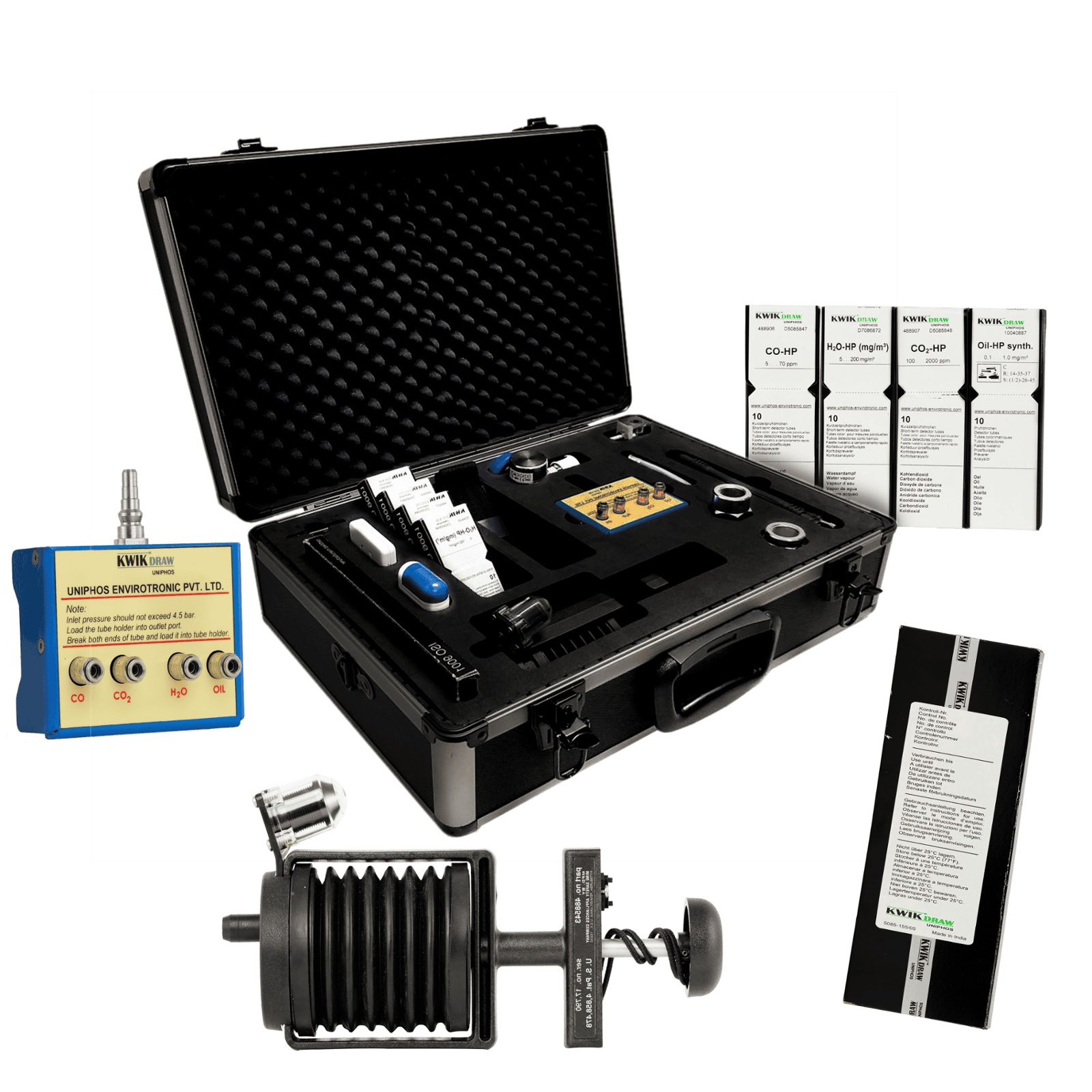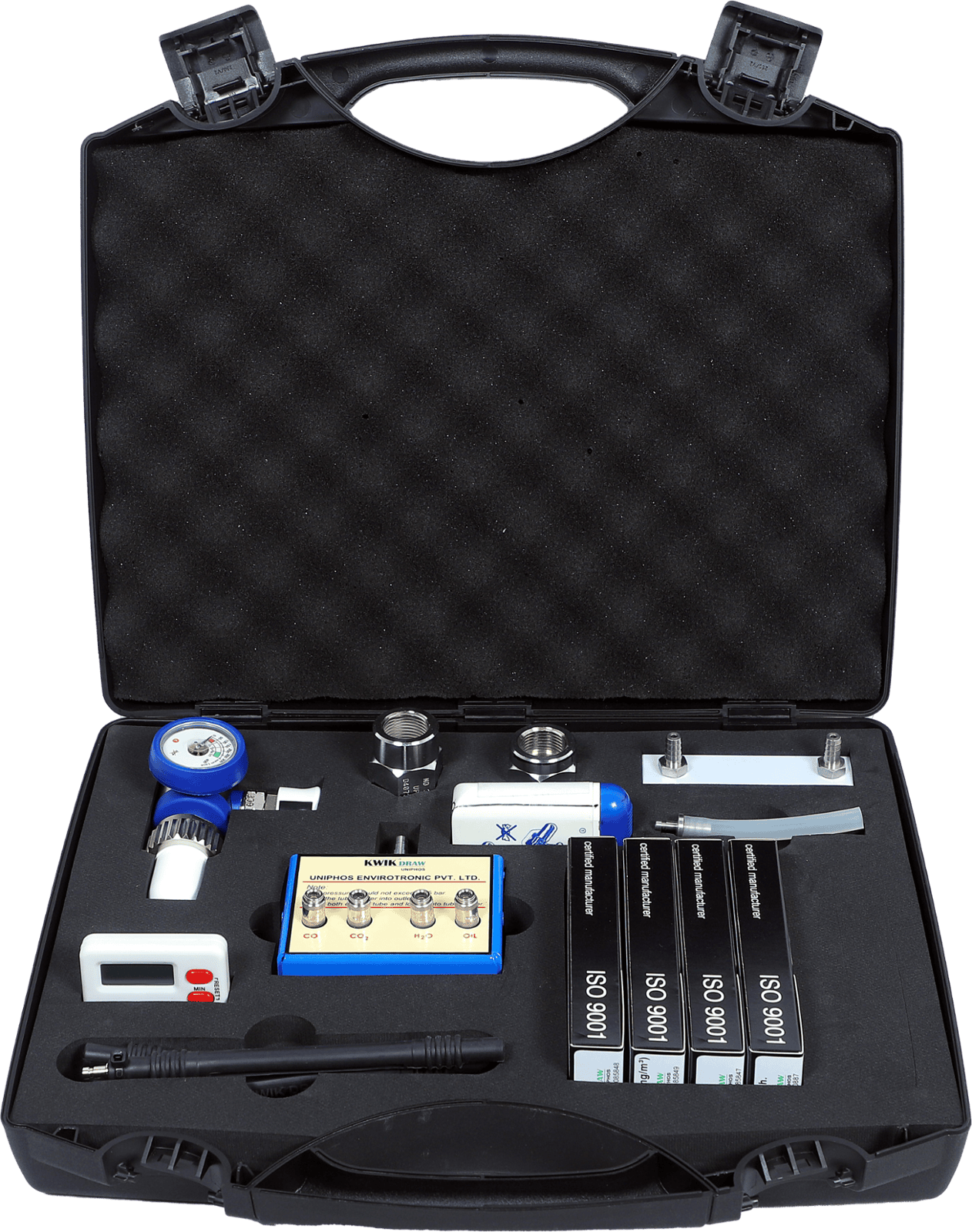
Breathing apparatus is an essential lifeline to workers operating in hazardous areas, which is why ensuring their breathing air is safe is vital. Contaminated breathing air can cause a range of health issues which are avoidable with regular testing. But you may be wondering why this testing is necessary? If breathing air lines are utilising the air that we breathe everyday, why do they need to be tested? And how do they get contaminated? In this blog, we aim to answer these questions to give you clarity on the importance of testing breathing air.
How does Breathing Air get Contaminated?
The most common pollutants of Breathing air consist of: Oil mist, Carbon Monoxide, Carbon Dioxide, Oxygen, Nitrous and Water Vapour. Here’s how it might become contaminated with these materials:
- CO: Carbon Monoxide can contaminate breathing air for multiple reasons. Compressors that utilise internal combustion engines can malfunction and cause CO to be pushed into the filling line. External sources of combustion can similarly push CO into the filling line. The breakdown of compressor lubricants like oil as well as the oxidisation of charcoal filters used in the filling process can also create CO contaminants.
- CO2: CO2 build up in areas where compressed air is being filled is a common source of CO2 contamination. In particular, areas without ventilation or areas that are closed off can quickly become inundated with CO2. Additionally, if filters become saturated with water, CO2 can be generated and pushed into the filling line.
- Water Vapour: Water Vapour contamination mainly comes from external sources. If the area of filling or the storage area has excessive moisture, the port may become moist and ultimately pollute the breathing air.
- Oxygen: Although tests for this aren’t as common, some may test for Oxygen to ensure that the levels are suitable for breathing. Standard Oxygen levels in the air are 20.9%, and levels above or below this can cause health issues in those utilising the breathing air. Air filling stations with background levels of Oxygen depleting gases such as Nitrogen or Carbon Dioxide can cause O2 levels to fall. Thus, impacting the level of Oxygen in the compressed air.
- Nitrous (NO and N2) – Similar to Oxygen, tests for this aren’t as common. However Nitrous Gases can cause their own set of issues to the quality of breathing air. In some cases, Nitrogen is generated on site as part of the process of filling gas bottles. Should the process fail or malfunction, Nitrogen may leak, leading to issues with compressed breathing air. Additionally, Nitric Oxide may become a hazard during the compression process due to extremely high temperatures. At these temperatures, Nitrogen and Oxygen can react to create Nitric oxide in your compressed air.
What are the Dangers of these Contaminents?
Each of these elements come with their own health hazards. For example, Carbon Monoxide exposure can cause poisoning in people, leading to long term lung issues and heart problems and in some cases can be fatal. Nitrogen and Carbon Dioxide similarly can displace Oxygen and cause asphyxiation, with CO2 being toxic to the body at high levels. Oil mist can cause lung irritation and coughing but if long term exposure occurs, issues such as Bronchitis and Asthma can develop. Nitric Oxide can also cause respiratory issues, such as pulmonary edema and in some cases can be fatal.
Water vapour causes different hazards to breathing air lines. If the water condenses into a liquid in the gas bottle, this can freeze in cold weather causing the airflow to block and stopping the breathing air from getting to the user. High levels of water can also increase the risk of exposure to particulates, due to waters ability to assist these in entering deep into the lungs.
Contaminants cause also lead to damaging the equipment in the long term which can be costly to the end user.
This is why it is important to test for these elements in your breathing air. EN 12021 mandates that tests are conducted every 3 months and have strict limits on the levels that can be present due to these hazards.
How can we help?
Easy gas tubes can assist in making sure your Breathing Apparatus is safe by providing our Kwikdraw Breathing Air Quality Test Kit. We provide all of the required tubes as standard in our kits, with the option to add Oxygen and Nitrous tubes in our HP+ kit. Additionally, our kit is the quickest, lightest and the lowest cost on the market, with all the neccessary parts included to ensure that you can get the most out of your kit without the extra expense.
Check out our kits and sets page to find out more about our options for testing breathing air.
Are we near you?
Easy gas tubes have distributors located across Europe, so we are never too far away from assisting you with your tubular needs. We are also looking for new partners! So if you are interested in becoming an Easy Gas Tubes distributor, contact us.



